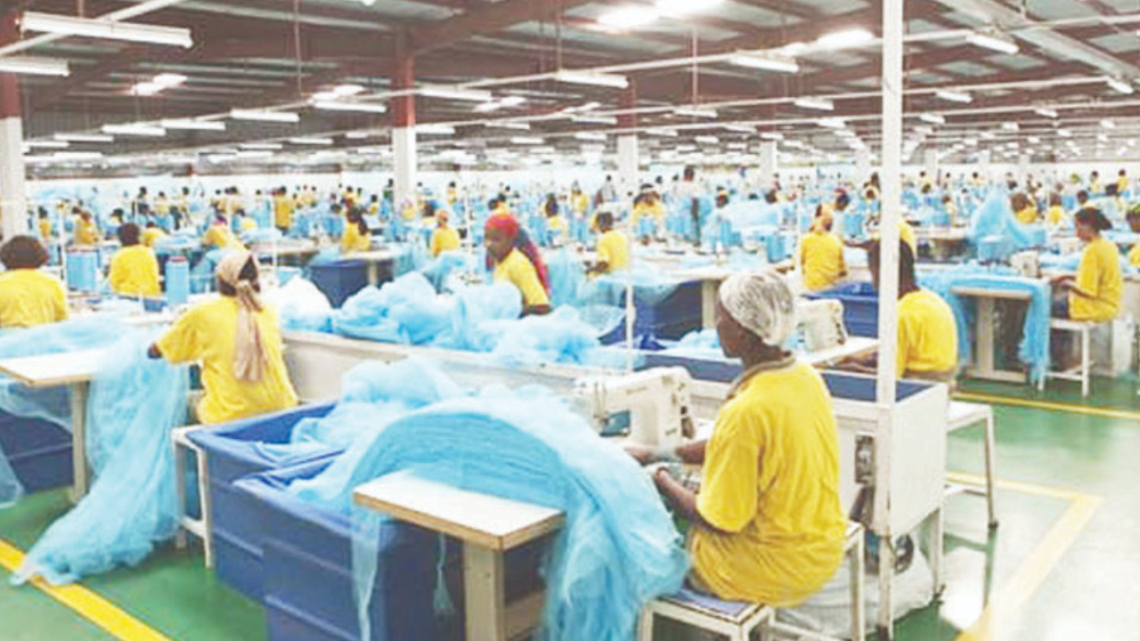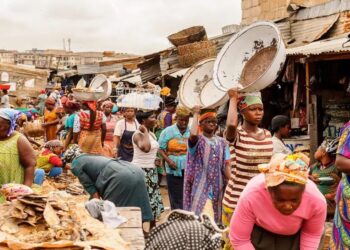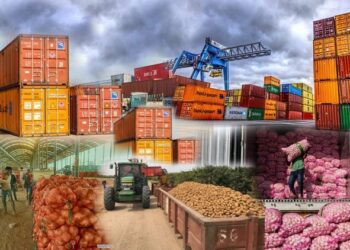Despite concerted efforts and financial injections to the tune of N2.43 trillion since the inception of Nigeria’s Fourth Republic spanning four successive regimes, the textile industry in Nigeria continues to face drooping fortunes, hindering its productivity and contribution to the economy.
Owing to its potential for economic growth, President Bola Tinubu, had made campaign promises to revive the ailing textile industry, especially in northern Nigeria to enhance job creation for the fledgling youth population. Ten months into the Tinubu administration, there are less than expected signs that the needed attention to the industry is being given. As expected, the industry remains under par relative to its potential.
The Nigerian textile industry has grappled with a myriad of challenges that have impeded its growth and competitiveness. Despite interventions and foreign exchange restrictions, importation of textiles and textile products has continued to rise, signaling the failure of existing policies to stimulate domestic production. Factors contributing to this include insufficient power supply, policy inconsistencies, rampant smuggling, and insecurity, which have eroded the industry’s ability to remain competitive against imported goods, particularly from countries like China and India.
Successive administrations have demonstrated commitment to reviving the textile industry, evident in various intervention programmes and substantial financial allocations. However, the impact of these initiatives has been limited, with little tangible improvement in the industry’s fortunes. This highlights the need for more effective strategies to address underlying structural issues and enhance competitiveness.
The president of the National Union of Textile Garment and Tailoring Workers of Nigeria (NUTGTWN), Comrade John Adaji, had said, “The situation is that the Nigeria textile sector was better in 2015 than it was at the end of the administration of President Muhammadu Buhari in May 2023. Many textile companies have been forced to close down in Kano, Kaduna and Lagos with over 15,000 direct job losses. Nichemtex Nigeria Limited based in Ikorodu Lagos with over 6,000 workers is among the closed factories.
“The importance of industry cannot be over-emphasised. The key to real transformation and economic recovery lies in manufacturing and promotion of small and medium scale enterprises.The cotton, textile, garment sector in particular is crucial for strengthening economic recovery, boosting employment and creating wealth for Nigerians. As a matter of fact, worldwide, textile being the engine for industrialisation has always been jealously protected by all governments,” he said.
Amidst its challenges, “Nigeria’s textile industry holds significant potential for contributing to foreign exchange earnings. The importation of textiles worth $240.93 million in 2023 underscores the demand for textile products within the country. By revitalising domestic production and reducing reliance on imports, Nigeria can tap into this demand to bolster its foreign exchange reserves, thereby enhancing economic stability and resilience,” said a retired lecturer of economics, Dr. Matthew Omokaro.
The global textile industry is valued at $920 billion and is expected to grow to $1.23trillion by 2024, with China, the United States of America, the European Union and India dominating the market. Other players include Turkey, South Korea, Taiwan and Pakistan.
Omokaro said the textile industry has long been recognised for its capacity to generate employment opportunities, particularly in Northern Nigeria where the sector has historical roots. He noted that reviving and expanding domestic textile production has the potential to create thousands of jobs, especially for youth and women, thereby addressing unemployment challenges and fostering social stability. “Moreover, a thriving textile industry can stimulate growth in related sectors, such as agriculture (for cotton production) and retail, further amplifying its impact on job creation,” he stated.
Another economist, Dr. Obasi Choba, averred that to unlock the full potential of Nigeria’s textile industry, there is an urgent need for sustainable revitalisation strategies that address underlying structural constraints and promote long-term competitiveness. “This includes addressing power supply challenges, enhancing policy consistency and enforcement to combat smuggling, and fostering an enabling business environment that encourages investment and innovation. Additionally, there must be a concerted effort to strengthen backward integration initiatives, promote value addition, and invest in skills development to enhance the industry’s capacity and resilience,” he stated.
Speaking about the place of the government to ensure a thriving textile industry, an industry stakeholder, Patricia Essien, said the success of the textile industry rests with the government. “I can say that because the success of the industry only requires adequate local demand. If the government can ensure that all of the uniform of the military and paramilitary, the NYSC, and a host of others were supplied by our local industries, we would have enough demand to keep the industry afloat. I think the government is playing lip service on this issue; and the industry has been experiencing dwindling fortunes for more than 30 years now,” she said.
Industry observers have blamed the failure of textile companies to remain competitive against imports from countries like China and India on insufficient power supply, government policy flip-flops, smuggling of imported textiles, and insecurity.
The interest of previous governments in the textile industry dates back to the Olusegun Obasanjo administration (1999-2007), which launched a N70 billion Textile Development Fund to revive the ailing industry.
This was followed by a N100 billion Cotton, Textile, and Garment Fund during the tenure of the Musa Yar’Adua/Goodluck Jonathan government (2007-2015).
Similarly, the Muhammadu Buhari government had launched at least three textile industry intervention funds since 2015 when he became president, including a N225 billion fund, N50 billion revival fund, and another N19 billion cotton fund.
Former President Umaru Musa Yar’Adua, also made spirited efforts to revive the ailing textile industry in 2009 when he approved the setting up of another N100 billion cotton, textile, and garment fund to enable key players to have access to cheap funds.
According to the Bank of Industry (BoI), which managed the fund, the majority of the funds were disbursed. However, there is no tangible improvement in the dwindling fortunes of the textile sector.
While Nigeria’s textile industry faces formidable challenges, it holds immense potential for contributing to economic growth, foreign exchange earnings, and job creation. However, realising this potential requires a holistic approach that addresses underlying structural constraints and promotes sustainable growth. By implementing effective policies, fostering innovation, and fostering collaboration between government, industry stakeholders, and the private sector, Nigeria can revitalis-e its textile industry and unlock new opportunities for prosperity and development.





